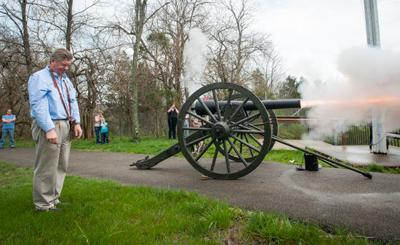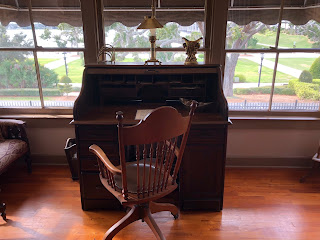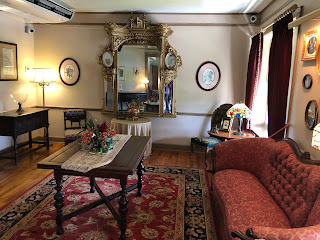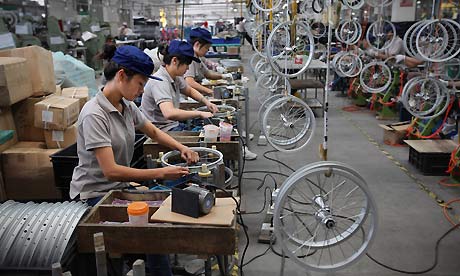Once, I rode through a gate of Greenwood Cemetery in Brooklyn. I'd visited the necropolis before: Two of my relatives, as well as some far-more-famous people, are buried there. Being the naif I was, I figured that if pedestrians and motor vehicles were allowed, so were bikes.
Well, I was a few bicycle lengths into the graveyard when someone on a motor scooter pulled up alongside me. "No bikes allowed," he bellowed.
"Oh, sorry. I didn't know..."
"This is sacred ground, you know."
Well, that part I didn't know: I figured that since Greenwood was non-sectarian, it wasn't "sacred." Also, since I've slept in graveyards twice in my life and the residents didn't seem to mind, it didn't occur to me that any of Greenwood's denizens would object to my quiet two-wheeled vehicle.
Apparently, that "sacred ground" rationale is used to ban bikes from cemeteries all over the world. I don't understand how a bicycle is more sacrilegious than, say, a van with "Puppies" and "Free Candy" painted on its side.
It's also the so-called reasoning behind the Frankfort (KY) city commission's vote to ban bicycles from Leslie Morris Park, the site of the US Civil War site of Fort Hill . The Commissioners, with Mayor Bill May casting the deciding vote, cited Fort Hill's status as "hallowed" ground: A local militia deterred an attempted raid by a Confederate cavalry unit in 1864. Although Kentucky didn't secede from the Union during the Civil War, an attempt was made to set up a Confederate government in Bowling Green. Had the raid succeeded, Frankfort--which was staunchly pro-Union--could have fallen to the Confederates, and Bowling Green would then have been the capital of the Confederate State of Kentucky. While such a turn of events might not have tipped the war to the Confederates, it almost certainly would have prolonged the war and delayed a Union victory.
In any event, cyclists had been riding on the rudimentary trails around Fort Hill. Some of those trails were little more than traces formed by deer that populate the 120-acre park, and most were laced with thorny bushes. Some cyclists, like Gerry James, enjoyed the challenge they posed. More important, he says, was the opportunity to ride so close to his downtown home.
What makes the new ban so galling to him and others is that it came in the wake of another plan, recently scuttled, to develop those paths so they could be used by runners and joggers as well as cyclists and others who want to spend some time outdoors. In fact, an elaborate plan was developed that would have kept those lanes at least 300 feet from any historical, environmental and archaeological sites. Moreover, its costs were minimal and some of the work would have been done by volunteers, including Scouts who were trying to attain the Eagle rank.
The project, which had many proponents, was seen as a way to make an historic site accessible to more people and connect it to the downtown area. It was also viewed as a way to encourage exercise in a state with some of the worst health outcomes (though, interestingly, one of the lowest rates of chlamydia) in the nation. Business leaders, too, liked it because they believed that it would bring investment to an area that, while economically stronger than the rest of the state, still does not attract or retain young talent.
One reason why the young leave the city and state is because projects like the Fort Hill trails are cancelled, or aren't even conceived in the first place. Of the vote, James--who founded the Explore Kentucky initiative--said, "It makes Frankfort look like an anti-progress city."
Well, I was a few bicycle lengths into the graveyard when someone on a motor scooter pulled up alongside me. "No bikes allowed," he bellowed.
"Oh, sorry. I didn't know..."
"This is sacred ground, you know."
Well, that part I didn't know: I figured that since Greenwood was non-sectarian, it wasn't "sacred." Also, since I've slept in graveyards twice in my life and the residents didn't seem to mind, it didn't occur to me that any of Greenwood's denizens would object to my quiet two-wheeled vehicle.
Apparently, that "sacred ground" rationale is used to ban bikes from cemeteries all over the world. I don't understand how a bicycle is more sacrilegious than, say, a van with "Puppies" and "Free Candy" painted on its side.
It's also the so-called reasoning behind the Frankfort (KY) city commission's vote to ban bicycles from Leslie Morris Park, the site of the US Civil War site of Fort Hill . The Commissioners, with Mayor Bill May casting the deciding vote, cited Fort Hill's status as "hallowed" ground: A local militia deterred an attempted raid by a Confederate cavalry unit in 1864. Although Kentucky didn't secede from the Union during the Civil War, an attempt was made to set up a Confederate government in Bowling Green. Had the raid succeeded, Frankfort--which was staunchly pro-Union--could have fallen to the Confederates, and Bowling Green would then have been the capital of the Confederate State of Kentucky. While such a turn of events might not have tipped the war to the Confederates, it almost certainly would have prolonged the war and delayed a Union victory.
In any event, cyclists had been riding on the rudimentary trails around Fort Hill. Some of those trails were little more than traces formed by deer that populate the 120-acre park, and most were laced with thorny bushes. Some cyclists, like Gerry James, enjoyed the challenge they posed. More important, he says, was the opportunity to ride so close to his downtown home.
What makes the new ban so galling to him and others is that it came in the wake of another plan, recently scuttled, to develop those paths so they could be used by runners and joggers as well as cyclists and others who want to spend some time outdoors. In fact, an elaborate plan was developed that would have kept those lanes at least 300 feet from any historical, environmental and archaeological sites. Moreover, its costs were minimal and some of the work would have been done by volunteers, including Scouts who were trying to attain the Eagle rank.
 |
| A Civil War commemoration at Leslie Morris Park, site of the Fort Hill monument. From the Frankfort State Journal. |
The project, which had many proponents, was seen as a way to make an historic site accessible to more people and connect it to the downtown area. It was also viewed as a way to encourage exercise in a state with some of the worst health outcomes (though, interestingly, one of the lowest rates of chlamydia) in the nation. Business leaders, too, liked it because they believed that it would bring investment to an area that, while economically stronger than the rest of the state, still does not attract or retain young talent.
One reason why the young leave the city and state is because projects like the Fort Hill trails are cancelled, or aren't even conceived in the first place. Of the vote, James--who founded the Explore Kentucky initiative--said, "It makes Frankfort look like an anti-progress city."





































